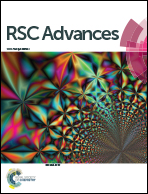Grafting bioactive polymers onto titanium implants by UV irradiation
Abstract
The anchorage failure of titanium implants in the human body is mainly due to biointegration problems. The use of bioactive polymers bearing anionic groups (such as sulfonates) in combination with titanium-based materials has been shown to be an excellent solution. In this paper, we report the grafting of an ionic polymer poly(sodium styrene sulfonate) (polyNaSS), in a two-step reaction procedure using UV irradiation. First, the titanium surfaces were chemically oxidized to allow the formation of titanium hydroxide and titanium peroxide. Then, titanium samples were immersed in a solution of sodium styrene sulfonate (NaSS) and were placed under UV irradiation to induce the decomposition of titanium peroxides with the formation of radicals capable of initiating the polymerization of the monomer NaSS. Various parameters, such as polymerization time, monomer concentration and lamp power were studied in order to optimize the yield of polyNaSS grafting. Fourier-transform infrared spectra recorded in attenuated total reflection mode (ATR-FTIR), scanning electron microscopy with Oxford energy dispersive spectroscopy (SEM-EDS) and contact angle measurements were applied to characterize the poly(NaSS) grafting. The amount of poly(NaSS) grafted onto the titanium surfaces was determined by the toluidine blue colorimetric method.


 Please wait while we load your content...
Please wait while we load your content...